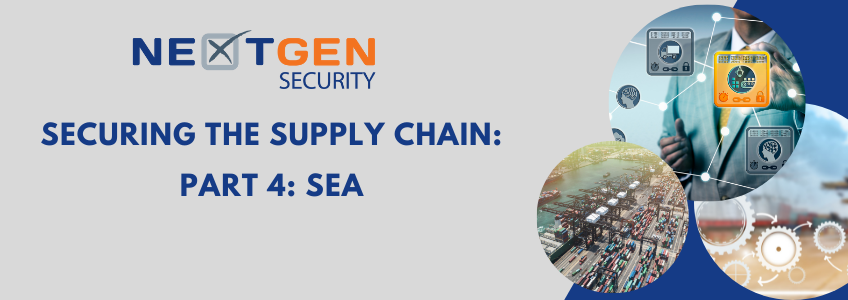Protecting the safe and smooth operations of our supply chain is pivotal to our national economy – and our national security. While we are currently experiencing some disruptions in our global supply chain, due in large part to post-pandemic repercussions. As ABC News recently reported, a worker shortage and high demand are causing delays. As the U.S. economy struggles to fully recover from the coronavirus pandemic, supply-chain disruptions across the country are driving up prices and leading to a growing shortage of goods. As the U.S. economy struggles to fully recover from the coronavirus pandemic, supply-chain disruptions across the country are driving up prices and leading to a growing shortage of goods. The supply-chain bottlenecks — around the world — have caused record shortages of many products that American consumers are used to having readily available, from household goods to electronics to automobiles.
The various facets of the supply chain – air, land and sea – have been impacted. Here we take a look at some of the security vulnerabilities that Maritime Transportation Systems face, and ways to mitigate them.
Sea transport ranks as one of the biggest industry segments, which only make sense since over 70% of the Earth’s surface is covered with water. Consequently, there are a lot of factors that figure into Maritime security.
The most common threats to which ships and maritime operations include terrorism, piracy, robbery, and illegal trafficking of goods and people. Because vessels are out on the open seas, the security officers who protect them have some very unique responsibilities. These can include onboard procedures such as regularly inspecting their vessel to monitor for anything out of the ordinary, overseeing maintenance to improve security, managing the coordination and handling of cargo to make sure everything is done according to protocol and ensure proper checks take place, as well as inspection of vessel stores and bunkers. If a vessel audit discovers anything wrong, it’s the security officer’s job to report it to the company safety officer so they can promptly implement corrective actions.
In terms of physical security solutions, the vessel’s security officer also needs to run screening programs such as the Transportation Worker Identification Credential checks that clear crew members to work around the vessel by passing background tests.
The Transportation Worker Identification Credential, also known as TWIC®, is required by the Maritime Transportation Security Act for workers who need access to secure areas of the nation’s maritime facilities and vessels. TSA conducts a security threat assessment (background check) to determine a person’s eligibility and issues the credential. U.S. citizens and immigrants in certain immigration categories may apply for the credential. Most mariners licensed by the U.S. Coast Guard also require a credential.
TWIC is a critically important access control security requirement to prevent people who pose a threat from gaining unescorted access to secure areas of the nation’s maritime transportation system. It mandates that TWIC cards – which are tamper-resistant, photo credential cards – be issued to workers who require access to ports, vessels, outer continental shelf facilities, and all qualified merchant mariners. The physical security features in TWIC cards provide a high level of guarantee that the cardholder is the same person to whom it was issued, and that the card being presented is valid.
NextGen has worked with numerous Maritime Transportation organizations because of our proven expertise in TWIC integration with physical access control systems. Sea transportation is a critically important component of our global supply chain. NextGen is here to support the Maritime industry with their security and compliance needs.

